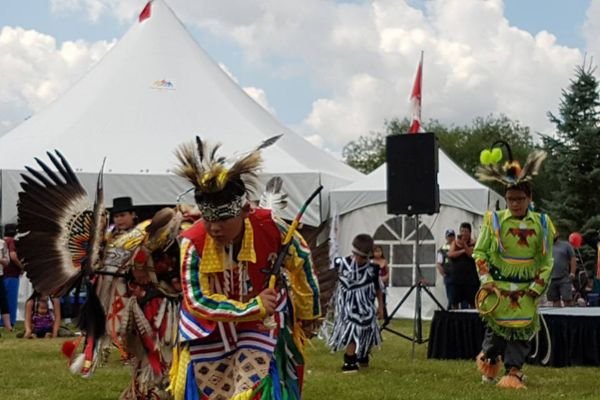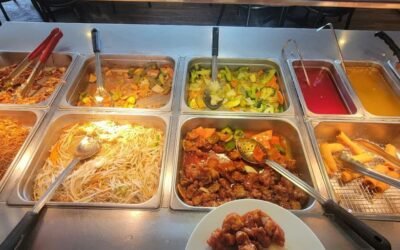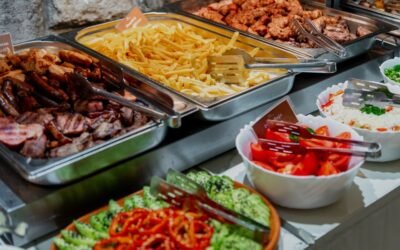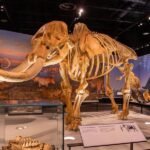Alberta is one of Canada’s most stunning provinces, known for its breathtaking landscapes, from the majestic Rocky Mountains to vast prairies. Located in Western Canada, Alberta plays a key role in the country’s history and economy. It became a province in 1905 and has since grown into a hub for energy production, agriculture, and tourism.
In this guide, we bring you a guide about Alberta. You’ll discover why the province is a must-visit destination. We’ll explore its natural wonders, vibrant cities like Calgary and Edmonton, and rich cultural heritage. If you are planning a trip or just curious, this guide will give you a clear and exciting overview of what makes Alberta special.
2. History and Culture
3. Major Cities and Urban Life
4. Alberta’s Economy and Industry
5. Alberta’s Natural Wonders and Outdoor Activities
6. Unique Attractions and Hidden Gems
7. Travel Tips and Recommendations
Best Time to Visit Alberta
Alberta is a year-round destination, with each season offering its own unique experiences. The best time to visit depends on what you want to do. Summer (June to August) is the most popular time for outdoor activities like hiking, camping, and exploring national parks. The weather is warm, with average temperatures ranging from 15°C to 35°C.
Fall (September to November) is perfect for witnessing the stunning fall foliage, especially in the Rocky Mountains. Winter (December to February) transforms Alberta into a winter wonderland, ideal for skiing, snowboarding, and ice skating. Average temperatures in winter range from -5°C to -35°C, so it’s important to dress warmly. Spring (March to May) brings mild weather and fewer crowds, making it a great time to visit before the summer rush.
Getting Around
Alberta is a vast province, so having a plan for getting around is essential. Renting a car is the most convenient option, especially if you plan to explore the national parks and rural areas. Alberta has well-maintained highways, and driving gives you the flexibility to stop at various attractions along the way.
Road trips are popular, with routes like the Icefields Parkway offering some of the most scenic drives in the world. Public transit is available in major cities like Calgary and Edmonton, with buses and light rail systems providing easy access to urban attractions. For longer distances, flights between cities or train travel via VIA Rail can also be considered.
Where to Stay
Alberta offers a wide range of accommodations to suit different preferences and budgets. In the cities, you’ll find everything from luxury hotels to budget-friendly motels. Calgary and Edmonton have a variety of options, including well-known hotel chains and boutique hotels.
For a more unique experience, consider staying at a mountain lodge or resort in places like Banff or Jasper, where you can enjoy stunning views and easy access to outdoor activities. Campgrounds are plentiful in Alberta’s national and provincial parks, with options ranging from basic tent sites to fully-equipped RV spots. Camping is a popular choice for those looking to immerse themselves in nature.
What to Pack
What you pack for your trip to Alberta depends on the season and the activities you plan to do. In summer, bring lightweight clothing, a good pair of hiking boots, sunscreen, and a hat for sun protection. Even in summer, the weather can be unpredictable, so it’s wise to pack a waterproof jacket and layers for cooler evenings.
For winter visits, pack warm clothing, including thermal layers, a heavy coat, gloves, a scarf, and insulated boots. If you plan to ski or snowboard, don’t forget your gear or consider renting equipment locally. Regardless of the season, always pack a reusable water bottle, as staying hydrated is important when exploring Alberta’s natural landscapes.
8. How to Get to Alberta
 Pin
PinBy Air
The most convenient way to reach Alberta is by air. Alberta has two major international airports: Calgary International Airport (YYC) and Edmonton International Airport (YEG). Both airports offer direct flights from major cities across Canada, the United States, Europe, and Asia. Calgary International Airport is the busiest in Alberta, handling over 18 million passengers annually, making it a popular entry point for visitors heading to the Rocky Mountains. Edmonton International Airport serves around 8 million passengers a year and is well-connected to both domestic and international destinations.
By Road
If you’re traveling from neighboring provinces or the United States, driving to Alberta is a scenic and flexible option. Major highways, such as the Trans-Canada Highway (Highway 1) and the Queen Elizabeth II Highway (Highway 2), provide easy access to the province. The drive from Vancouver, British Columbia, to Calgary takes about 10 hours, offering breathtaking views of the Rocky Mountains along the way. From the United States, Interstate 15 connects to Alberta through Montana, leading to cities like Lethbridge and Calgary.
Entering Alberta through US-Canada Borders
If you’re traveling to Alberta from the United States, several border crossings provide entry into the province. Each of these border crossings offers a unique route into Alberta, depending on your starting point and destination.
- Carway Border: Located on Highway 2, the Carway Border connects Alberta with Montana and is a convenient entry point for travelers heading to southern Alberta, including popular destinations like Waterton Lakes National Park.
- Del Bonita Border: This border crossing on Highway 62 offers a quieter route into Alberta, primarily used by those traveling to the central part of the province, including Lethbridge and the surrounding agricultural areas.
- Sweet Grass Border: The Sweet Grass Border, connected by Interstate 15 in Montana and Highway 4 in Alberta, is one of the busiest crossings and is ideal for those traveling to Lethbridge or continuing to Calgary.
- Aden Border: Located on Highway 880, the Aden Border is a lesser-used crossing that serves travelers heading to the southeastern regions of Alberta, including Medicine Hat.
- Wild Horse Border: This crossing on Highway 41 is perfect for those seeking a scenic route into southeastern Alberta, offering access to the prairies and Badlands, including the Dinosaur Provincial Park area.
By Train
For a more leisurely and scenic journey, consider traveling to Alberta by train. VIA Rail offers routes that connect Alberta to other parts of Canada, including the popular “Canadian” route that runs from Vancouver to Toronto, passing through Jasper National Park. The Rocky Mountaineer is another famous train service, offering luxury rail journeys through the Rockies, with stops in Banff, Lake Louise, and Jasper.
9. Alberta Tax System
No Provincial Sales Tax
One of the unique aspects of Alberta’s tax system is that it does not have a provincial sales tax (PST). This makes Alberta one of the few provinces in Canada where residents and visitors only pay the federal Goods and Services Tax (GST) of 5% on most goods and services. This lack of a provincial sales tax is a significant benefit for consumers, making Alberta an attractive destination for shopping and business.
Personal Income Tax
Alberta has a progressive personal income tax system, with rates that vary depending on income levels. As of 2023, the personal income tax rates range from 10% for income up to $142,292 to a maximum of 15% for income over $341,502. Alberta’s income tax rates are among the lowest in Canada, which is one of the reasons the province is popular for both individuals and businesses.
Corporate Income Tax
Alberta also offers a competitive corporate tax environment. The general corporate income tax rate in Alberta is 8%, which is one of the lowest in Canada. This rate applies to most businesses, making Alberta an attractive location for companies looking to establish or expand their operations. The small business tax rate is even lower, at 2%, providing additional incentives for entrepreneurs and small business owners.
10. First Nations in Alberta
 Pin
PinOverview of First Nations
Alberta is home to a diverse and vibrant Indigenous population, with more than 258,000 First Nations, Métis, and Inuit people living in the province. There are 48 distinct First Nations in Alberta, divided into three major cultural groups: the Plains Cree, the Dene, and the Blackfoot. These groups have lived on the land for thousands of years, developing rich cultures, languages, and traditions that continue to thrive today.
Treaty Areas
Alberta is covered by several historic treaties between the Canadian government and Indigenous peoples. The most significant of these are Treaty 6, Treaty 7, and Treaty 8, which were signed in the late 19th century. These treaties were meant to define the relationship between the First Nations and the Crown, including land use and rights. Today, these treaties remain important documents that continue to influence the relationship between Indigenous peoples and the Canadian government. Understanding these treaties is key to recognizing the rights and sovereignty of First Nations in Alberta.
Cultural Heritage and Traditions
The First Nations in Alberta have a rich cultural heritage that is deeply connected to the land. Traditional practices such as hunting, fishing, and gathering continue to be important aspects of life for many Indigenous people. The spiritual connection to the land is reflected in ceremonies like the Sun Dance, which is still practiced today. The preservation of Indigenous languages, such as Cree and Blackfoot, is also a priority for many First Nations communities, as language is a vital part of cultural identity.
Contributions to Alberta
First Nations have made and continue to make significant contributions to the cultural, economic, and social fabric of Alberta. Indigenous businesses are growing across the province, contributing to sectors such as tourism, arts, and resource management. Events like the Calgary Stampede and Edmonton’s Indigenous Peoples Festival celebrate Indigenous culture, offering opportunities for both Indigenous and non-Indigenous people to learn and appreciate this rich heritage.
Challenges and Future Directions
Despite their resilience and contributions, First Nations in Alberta face ongoing challenges, including issues related to land rights, health disparities, and economic opportunities. Efforts are being made to address these challenges through initiatives focused on education, economic development, and reconciliation. The Truth and Reconciliation Commission’s calls to action have prompted many organizations and governments in Alberta to work towards better relationships with Indigenous communities and to honor their rights and contributions.
Conclusion: Things to know about Alberta
Alberta is a province like no other, offering a unique blend of stunning natural beauty, rich cultural heritage, and vibrant urban life. From the majestic Rocky Mountains and expansive prairies to the historical significance of its Indigenous communities and the bustling energy of cities like Calgary and Edmonton, Alberta will wow you.
We encourage you to explore all that Alberta has to offer. Discover its hidden gems, immerse yourself in the local culture, and take in the breathtaking scenery that makes this province so special. Alberta’s natural wonders and diverse attractions are waiting for you to experience them firsthand.
If you’ve visited Alberta or are planning a trip, we’d love to hear about your experiences. Feel free to share your stories, ask questions, or leave comments. Your insights can help others discover the magic of Alberta and make the most of their visit.
FAQs
What is Alberta best known for?
Alberta is best known for its stunning Rocky Mountains, including Banff and Jasper National Parks, and its role as a leader in Canada’s oil and gas industry.
What makes Alberta so special?
Alberta’s unique mix of breathtaking natural beauty, rich cultural heritage, and economic vitality make it a special place to live and visit.
What food is Alberta known for?
Alberta is known for its high-quality beef, especially Alberta steak, and its production of wheat and canola.
What is Alberta rich in?
Alberta is rich in natural resources, particularly oil and gas, as well as fertile farmland for agriculture.
What is Alberta’s main animal?
Alberta’s main animal is the bison, which is also the provincial symbol.









